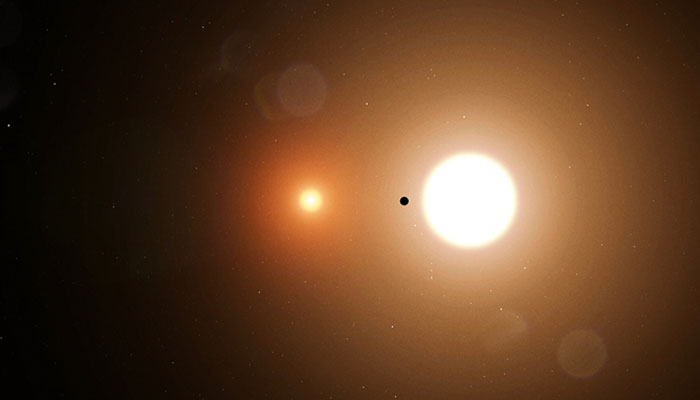Astonishing: Scientists discover planets orbiting two stars
While observing, scientists have discovered a new planet BEBOP-1c — the 15th known Tatooine world
June 19, 2023

Scientists have discovered in their new study some exoplanets that are orbiting two stars in the same system, allowing scientists to revamp their understanding of the Star Wars-like planets that they commonly exist.
These kinds of exoplanets — Tatooine worlds, or circumbinary planets — exist in a system where there are two stars. And due to this, someone on these planets would witness two suns in the sky.
Kepler-16b, a circumbinary planet was identified in 2011 and followed by the discovery of two more Kepler-34b and Kepler-35b, in 2012.
A total of at least 14 such different exoplanets have been discovered with the help of Nasa’s Kepler space telescope, which detected the majority of these Tatooine worlds, and was decommissioned in 2018.
The findings were published in the journal Nature Astronomy, in which scientists were observing BEBOP-1 — a star system around 1,320 light-years from our planet — and its planet BEBOP-1b which was discovered in 2020.
While observing, scientists have discovered a new planet BEBOP-1c — the 15th known Tatooine world. This also makes BEBOP-1 a multi-planetary circumbinary system (MCS).
According to the data, the newly discovered BEBOP-1c is around 65 times more massive than Earth, or around five times less massive than Jupiter. The previously known BEBOP-1b is around the same size as Saturn.
BEBOP-1 is the second known MCS. The first one is Kepler-47 which was discovered in 2012 and has three exoplanets.
Earlier, circumbinary planets were thought to be extremely rare citing the gravitational complexities of their potential orbits.
According to scientists’ estimation, up to half of the stars the size of our sun in the Milky Way form in pairs, there could be thousands of these worlds in our galaxy waiting to be found.
The evidence from the past suggests that our own sun was possibly part of a binary system before the solar system came into being.
Researchers in 2021, also discovered the first "circumtriple planet" orbiting 3 suns in a single system, known as GW Orionis.
The researchers hope to carry out further study on the circumbinary planet and also believe that they could use Nasa’s James Webb Space Telescope to peer more closely at the system in the future to find out.









